Sensitivity Analysis of Spatial Scale and Particle Density on Overland Flow Pattern Accuracy and Computational Demand
AGU 2024, Washington D.C
2024-12-12
This talk was funded by the USDA Natural Resources Conservation Service (NRCS).
What is SIMWE?
SIMWE (SIMulation of Water Erosion Model) is a spatially distributed processes-based overland flow model that simulates water flow.
How does SIMWE work?
SIMWE uses Green’s function to solve the St. Venant system of equations via a Monte Carlo path sampling method.
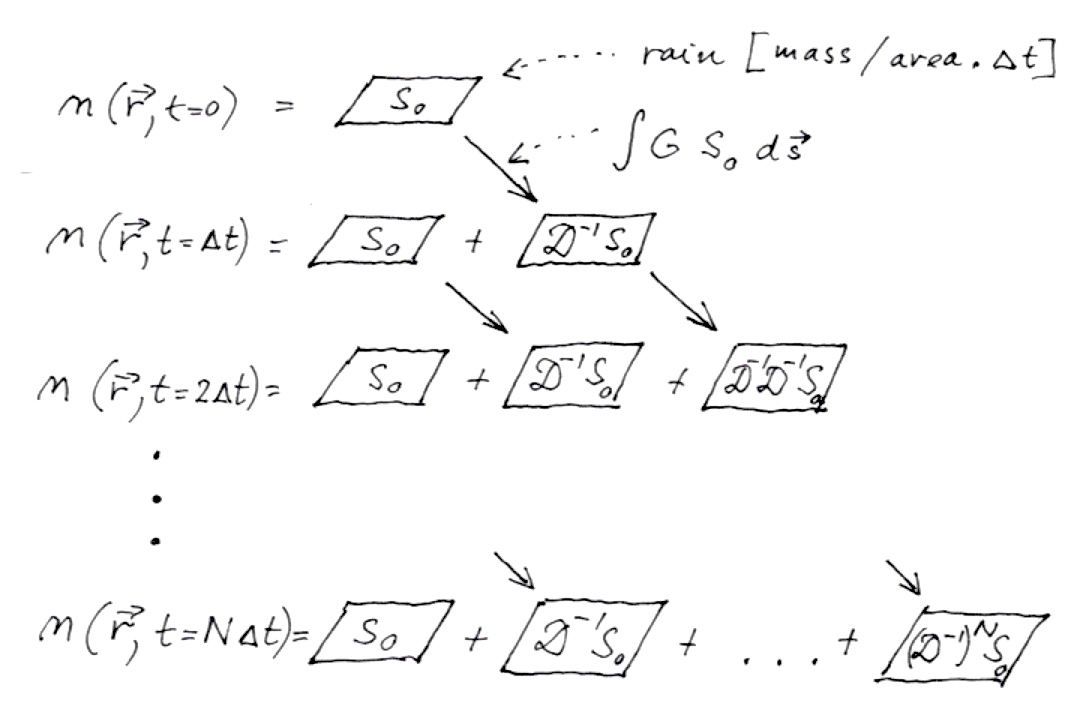
Why this method?
Water flows according to the shallow water bivariate continuity equation (mass conservation), incorporating drift and diffusion, which allows the elevation model to remain unmodified (e.g., no sink and fill processing).
Path Sampling Method
Solution of SWF equation incorporates spatially variable flow velocity
- Variable rainfall excess (impact of soils and land cover on infiltration),
- Topography (slope steepness)
- Land cover (Mannings roughness coefficient)
Computational Demands of Overland Flow Modeling?
The accuracy of overland flow simulations using path sampling methods depends heavily on particle density. However, varying particle density and spatial scale can be computationally demanding.
Error is proportional to \(1/\sqrt{N}\) where \(N\) is number of particles.
Why is this a problem?
- Restrictive for research and policy development
- Emergency management applications require rapid response times
- Accuracy depends on particle density
- Spatial scale influences particle density required for accurate results
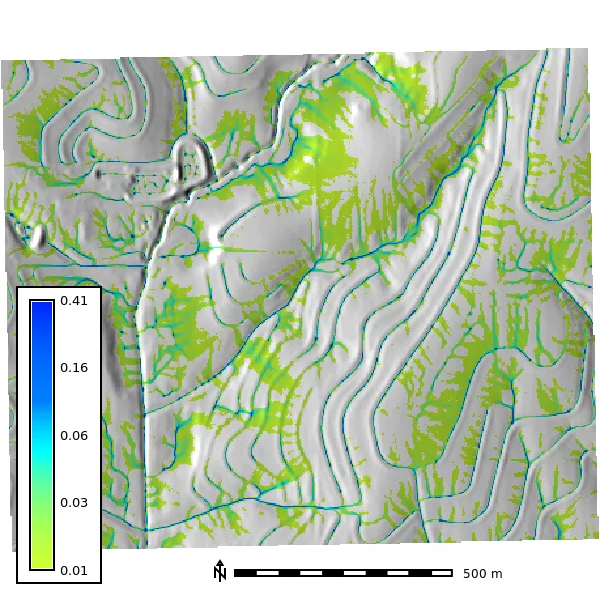
How did we approach this problem?
Software

GRASS GIS v8.5
Geospatial Processing Engine
C and Python APIs
Open Source GPL v3
Parallelized (OpenMP)
SIMWE implemented as GRASS module r.sim.water
Computational Resources
| Component | Specification |
|---|---|
| Laptop | System76 Serval WS |
| OS Name | Pop!_OS 22.04 LTS |
| OS Type | 64-bit |
| Memory | 64.0 GiB |
| Processor | 13th Gen Intel® Core™ i9-13900HX × 32 |
| Graphics | NVIDIA Corporation / Mesa Intel® Graphics (RPL-S) |
| Disk Capacity | 8.0 TB |
Model Parameterization
Spatially Uniform Parameters
- Rainfall: 50 \(mm/hr\)
- Infiltration Rate: 0 \(mm/hr\)
- Manning’s C: 0.1
Temporal Parameters
- Time Step: 5 min
- Event Duration: 30 min
Resolution and Particle Density
- Resolution: [1, 3, 5, 10 ,30]
- Particle Density: [0.25, 0.5, 1, 2, 4]
gs.run_command(
"r.sim.water",
elevation=elevation,
dx=dx,
dy=dy,
rain_value=50, # mm/hr
infil_value=0.0, # mm/hr
man_value=0.1,
nwalkers=particles,
niterations=niterations, # duration (minutes)
output_step=OUTPUT_STEP, # minutes
depth=depth, # m
discharge=disch, # m3/s
random_seed=random_seed,
nprocs=30,
flags="t",
)GRASS GIS Python API
Area Ruggedness Scale (ARS)
TRI (Terrain Ruggedness Index): measures the differnce in elevation between cells using a moving window (Riley et al., 1999).
- TRI ran with a 5x5 Neighborhood
Area Ruggedness Scale (ARS): is the mean TRI (Terrain Ruggedness Index) for the entire study area.
- Less Rugged: Low Values
- More Rugged: High Values
Study Areas - SJER

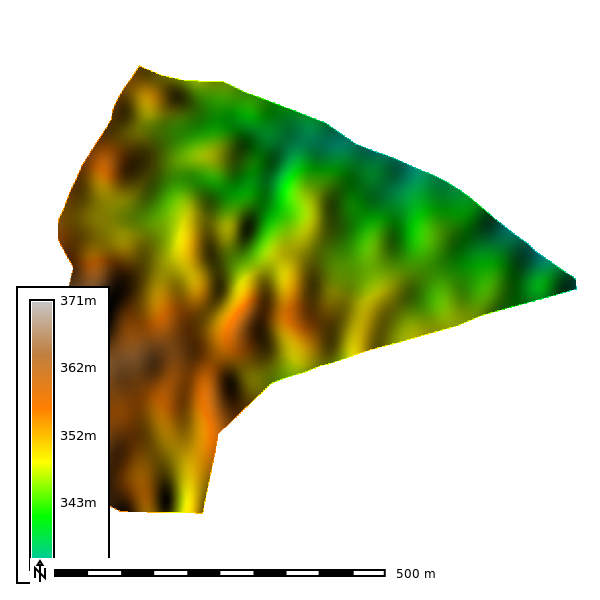
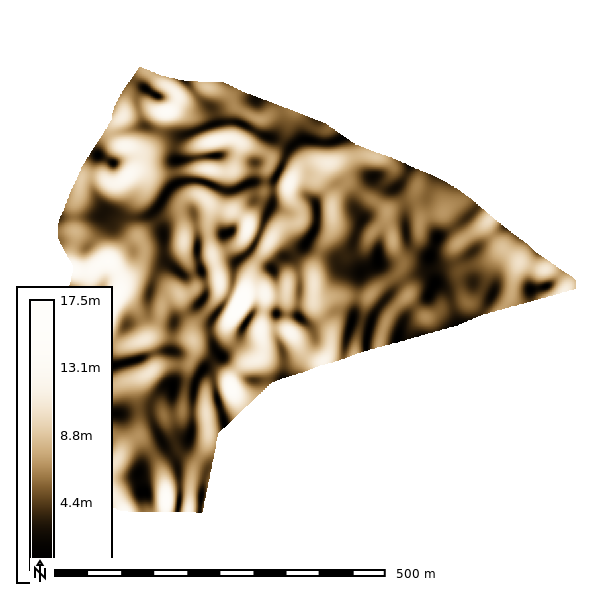
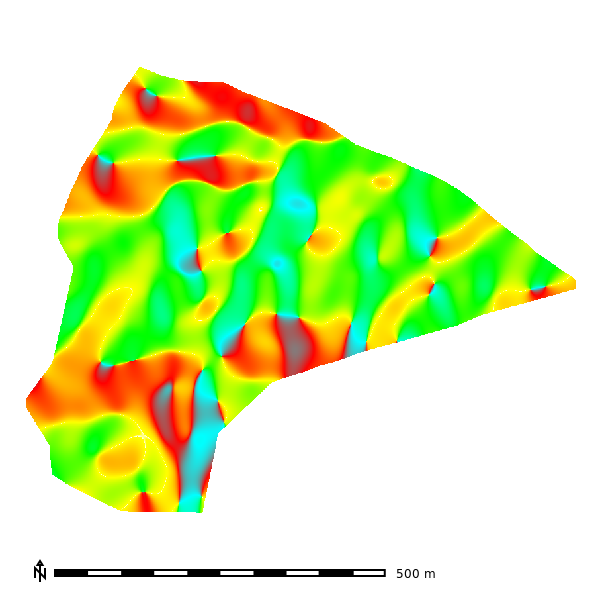
| Site Details | |
|---|---|
| EPSG | 26911 |
| Res. | 1 \(m\) |
| Cells | 295,126 |
| Area | 0.3 \(km^2\) |
| ARS | 0.14 |
| Elevation | |
|---|---|
| Min - Max | 333.12 - 371.12 \(m\) |
| Range | 38.0 \(m\) |
| Mean | 349.67 \(m\) |
| Std | 7.96 |
Study Area - Clay Center
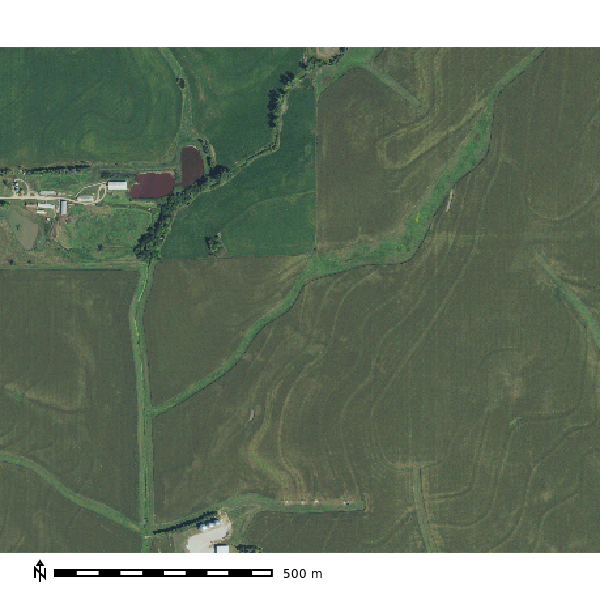



| Site Details | |
|---|---|
| EPSG | 32614 |
| Res. | 3 \(m\) |
| Cells | 170,244 |
| Area | 1.53 \(km^2\) |
| ARS | 0.13 |
| Elevation | |
|---|---|
| Min - Max | 376.69 - 396.57 \(m\) |
| Range | 19.9 \(m\) |
| Mean | 386.71 \(m\) |
| Stddev | 5.03 |
Study Area - Coweeta




| Site Details | |
|---|---|
| EPSG | 26917 |
| Res. | 10 \(m\) |
| Cells | 572,246 |
| Area | 57.17 \(km^2\) |
| ARS | 5.5 |
| Elevation | |
|---|---|
| Min - Max | 652.8 - 1597.6 \(m\) |
| Range | 944.8 \(m\) |
| Mean | 1043.83 \(m\) |
| Stddev | 230.3 |
Study Area - SFREC




| Site Details | |
|---|---|
| EPSG | 26910 |
| Res. | 1 \(m\) |
| Cells | 380,014 |
| Area | 0.38 \(km^2\) |
| ARS | 0.37 |
| Elevation | |
|---|---|
| Min - Max | 188.61 - 415.64 \(m\) |
| Range | 227.03 \(m\) |
| Mean | 282.1 \(m\) |
| Stddev | 56.1 |
Study Area - tx069-playas




| Site Details | |
|---|---|
| EPSG | 32613 |
| Res. | 8 \(m\) |
| Cells | 5,378,306 |
| Area | 324.74 \(km^2\) |
| ARS | 0.07 |
| Elevation | |
|---|---|
| Min - Max | 1104.0 - 1165.3 \(m\) |
| Range | 61.3 \(m\) |
| Mean | 1134.9 \(m\) |
| Stddev | 13.13 |
Study Areas
| Site | ARS |
|---|---|
| tx069-playas | 0.07 |
| clay-center | 0.13 |
| SJER | 0.14 |
| SFREC | 0.37 |
| Coweeta | 5.5 |
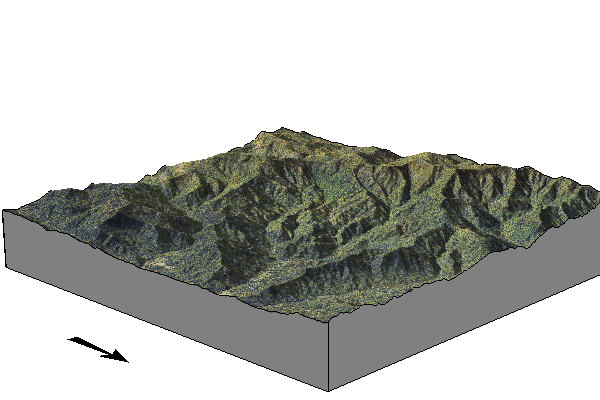
Preliminary Results
Evaluating
- SJER
- Clay-Center
Compute Time

Particles have a greater impact on compute time than resolution.
Spatial Patterns of Overland Flow
SJER - Mean Depth
1m Resolution, Particle Density: 4x
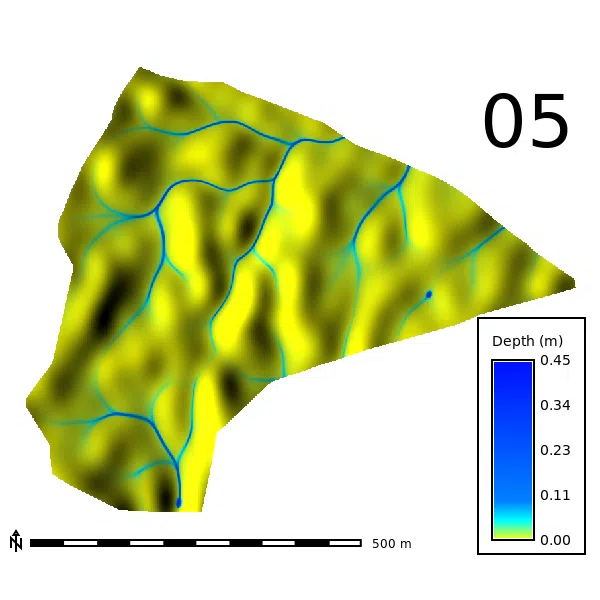
SJER
SJER - Mean Depth, 1m Resolution, Particle Density: 4x
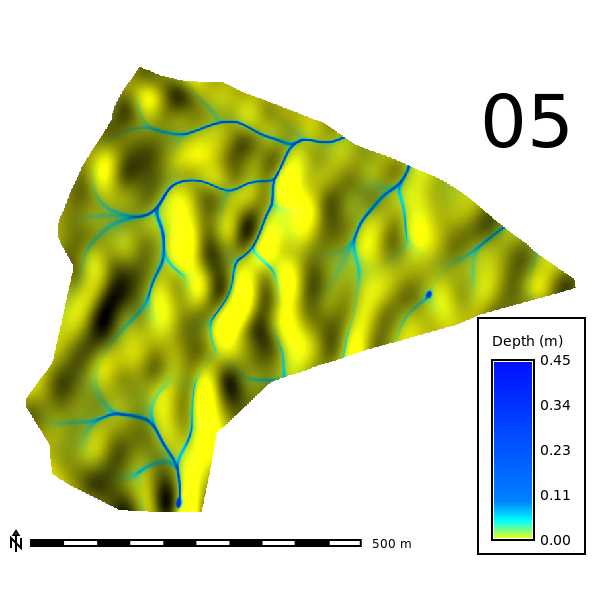
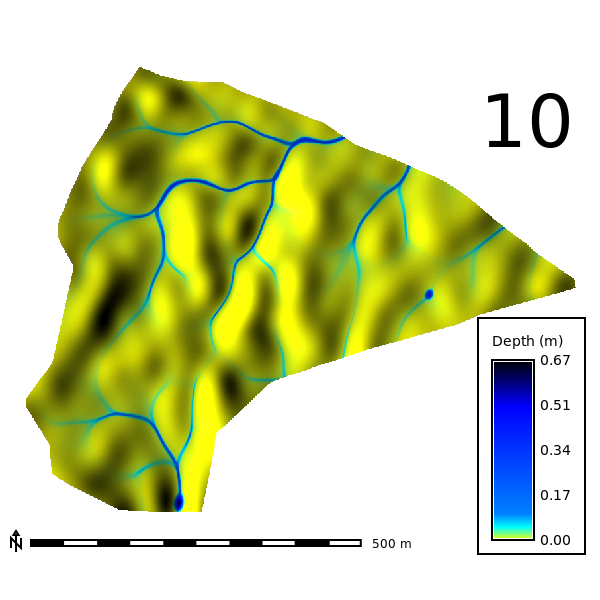
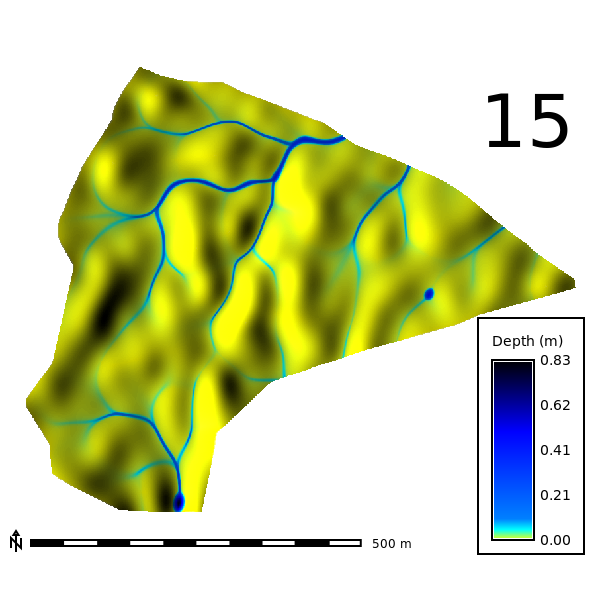
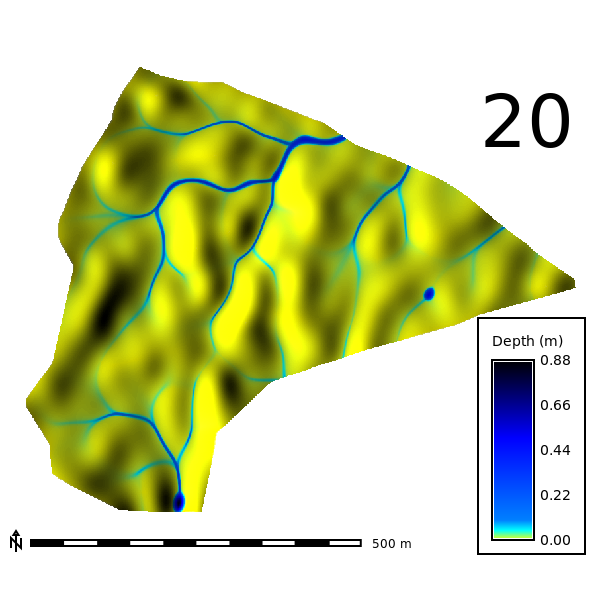
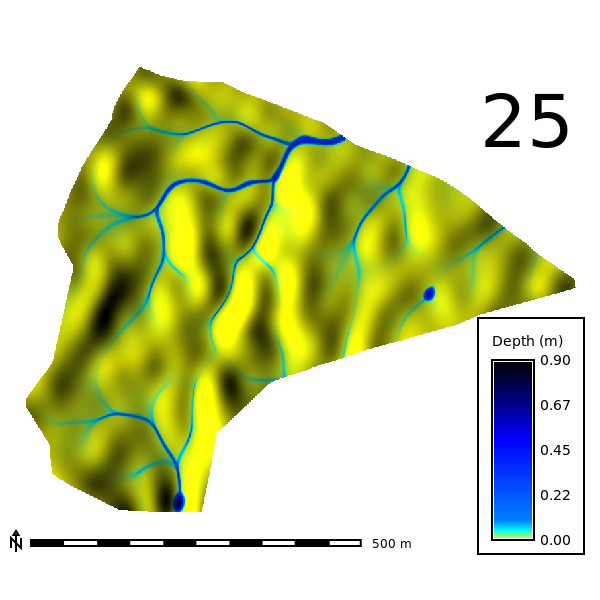
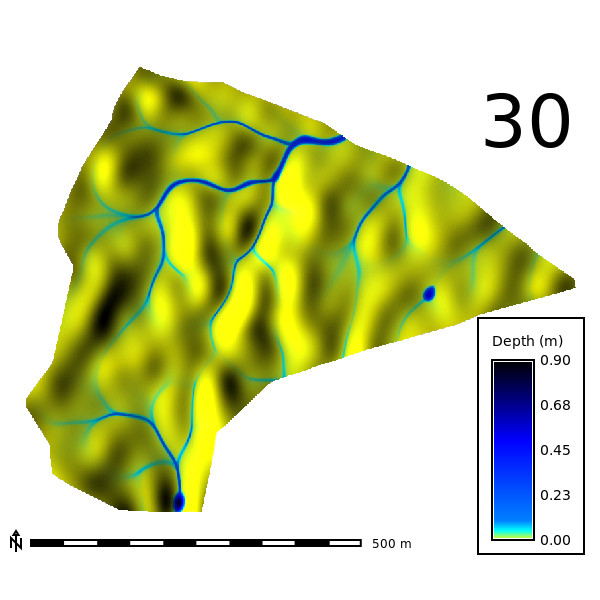
SJER - Mean Flow Depth
0.25x
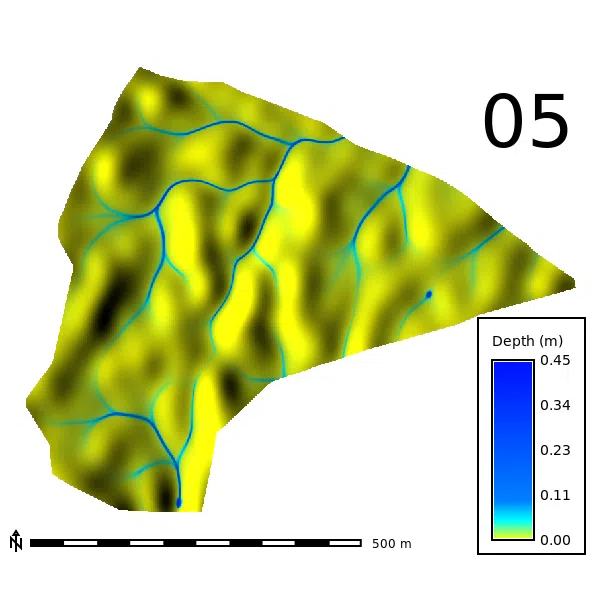
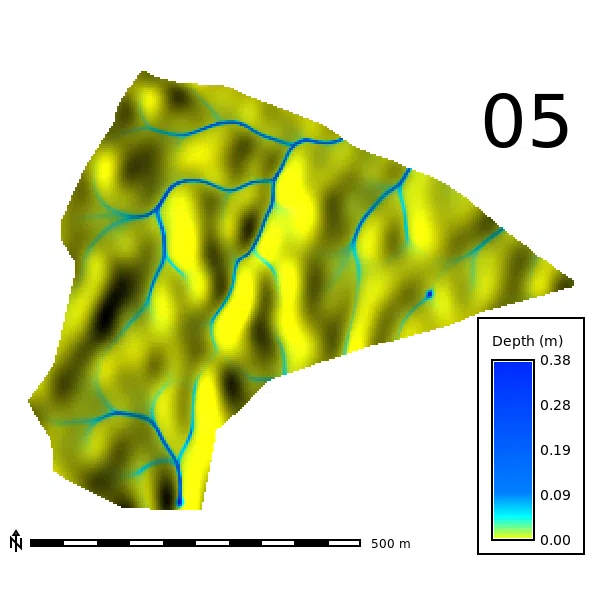
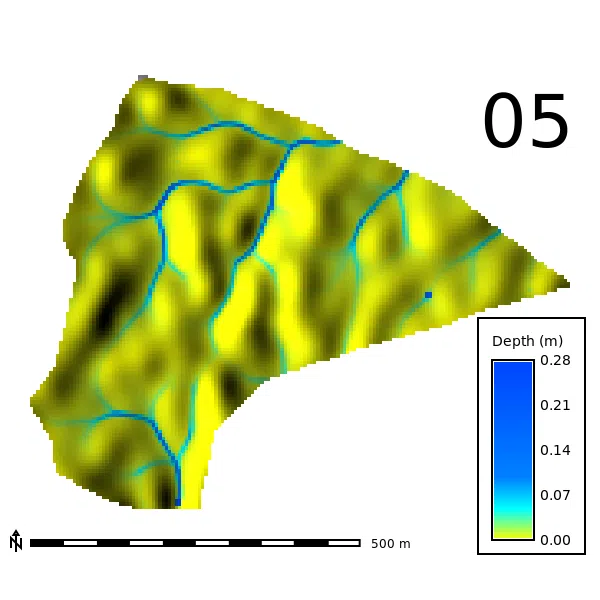
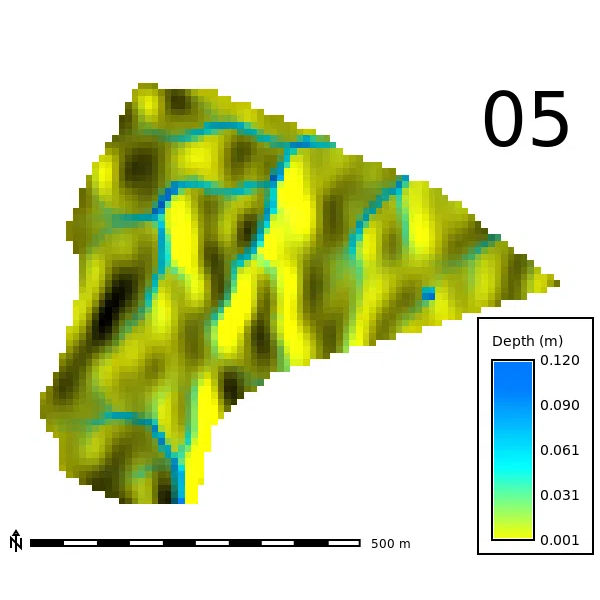
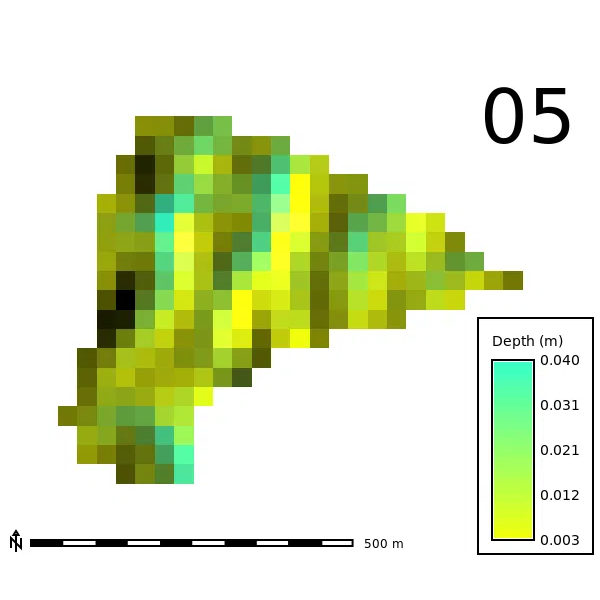
1x
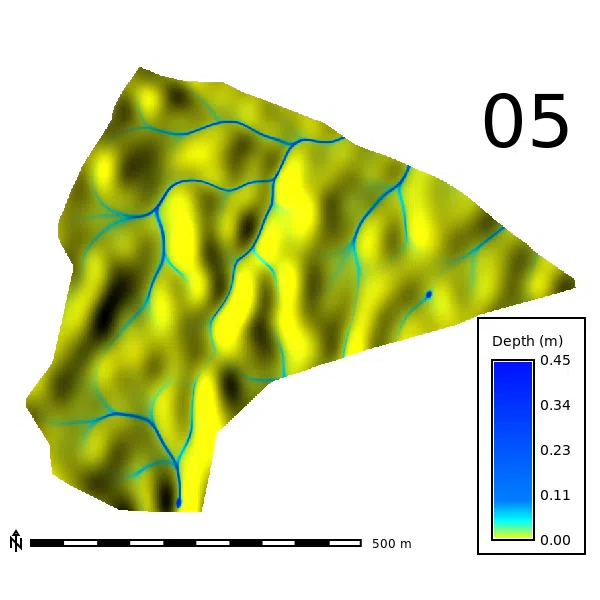

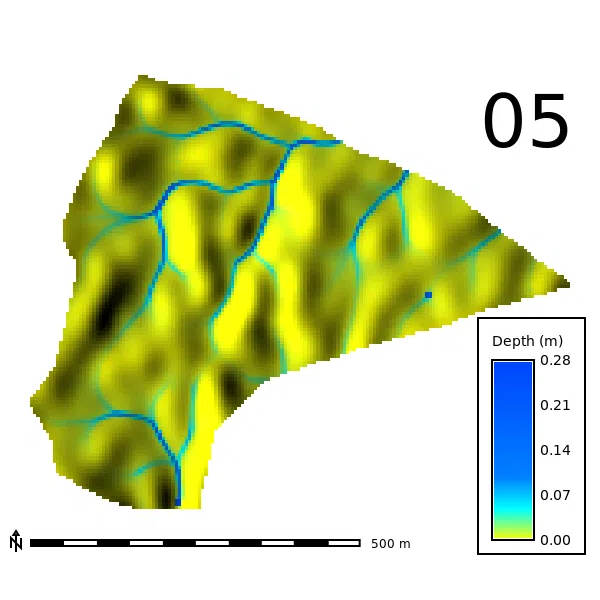
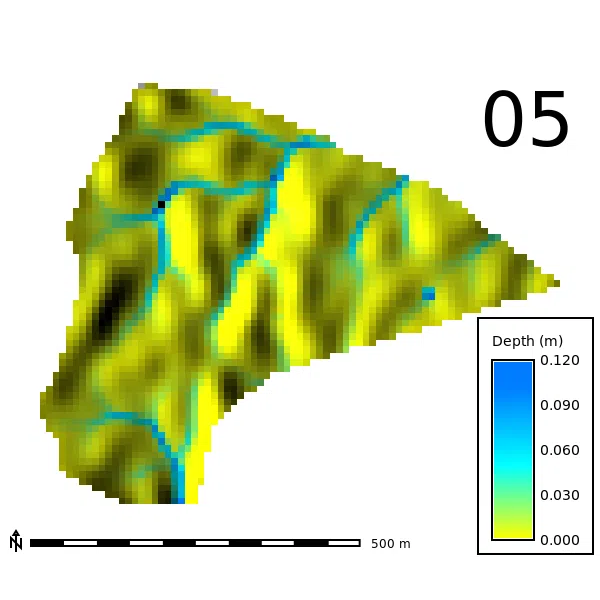
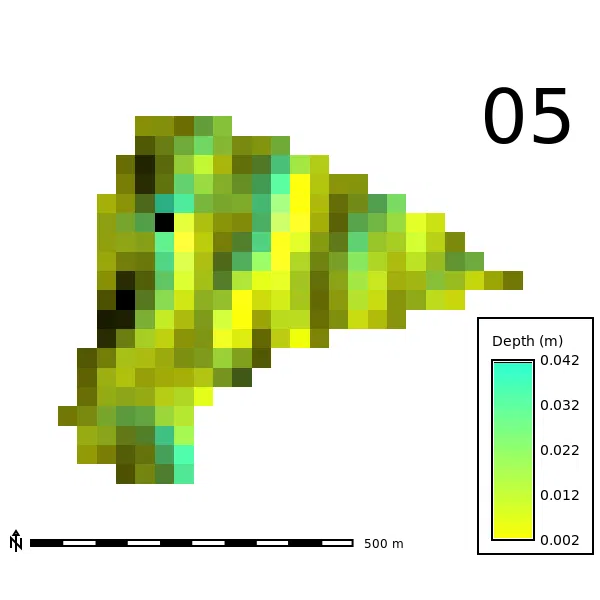
4.0x

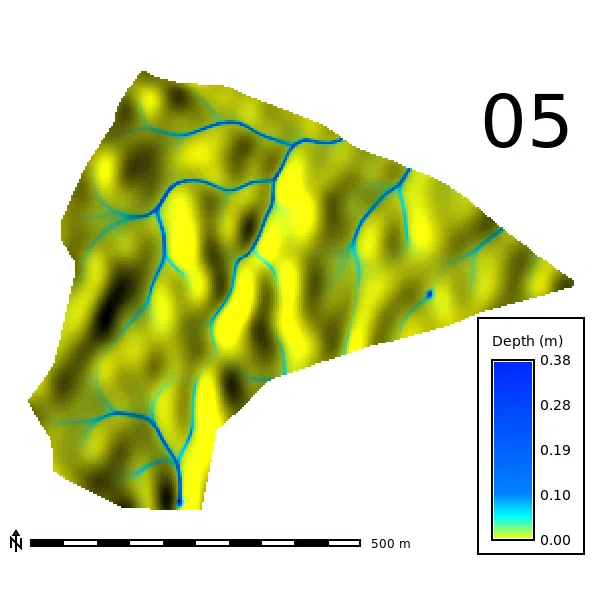
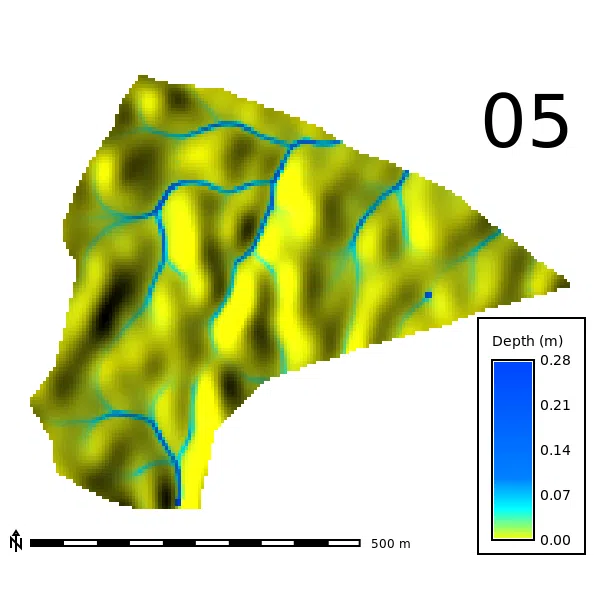
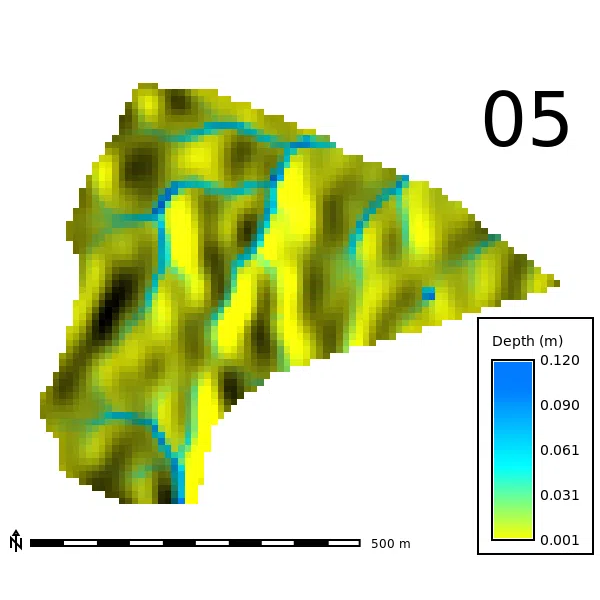
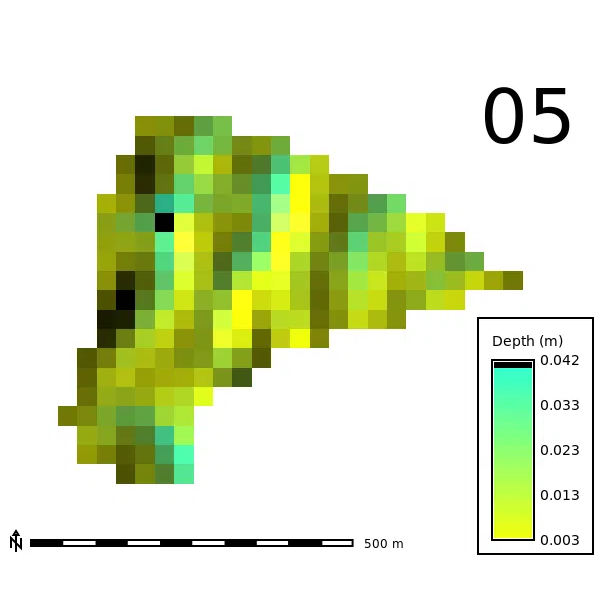
Clay Center - Mean Depth
1m Resolution, Particle Density: 4x
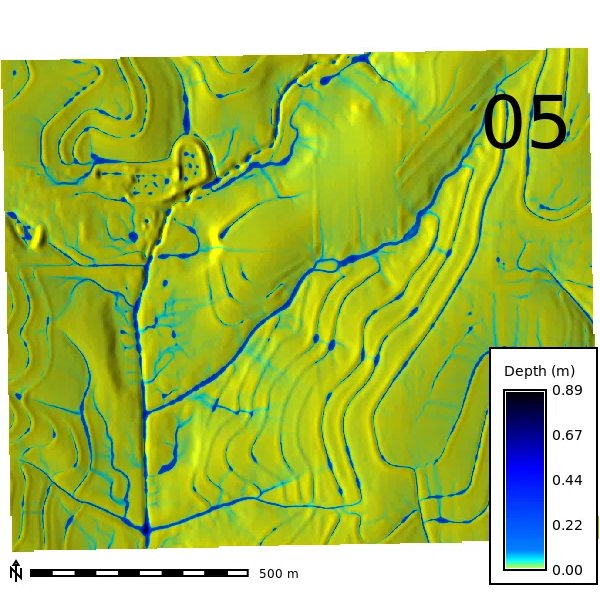
Clay Center - Mean Flow Depth
0.25x
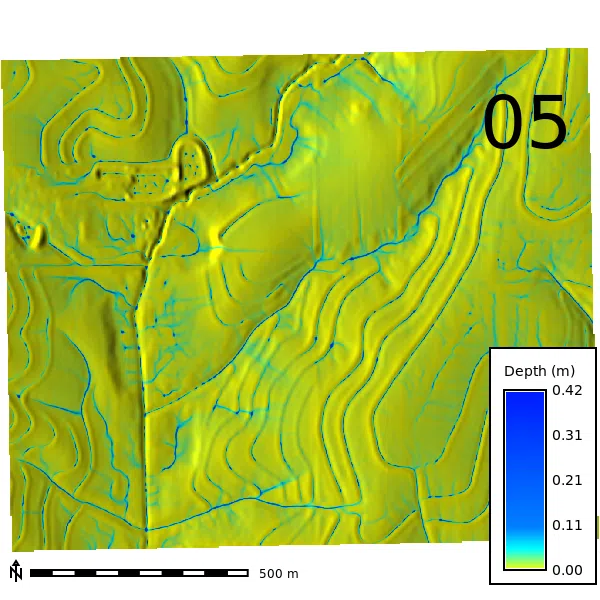

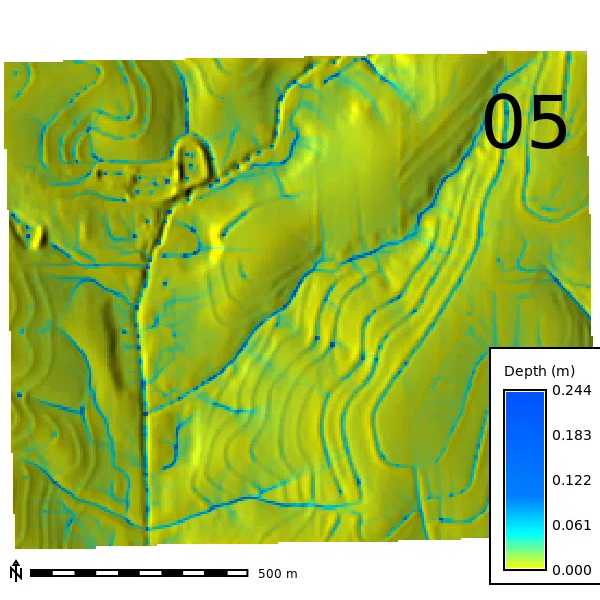
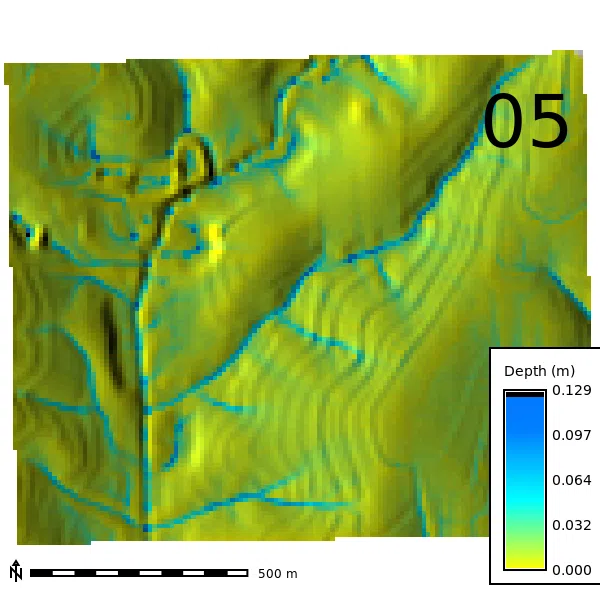
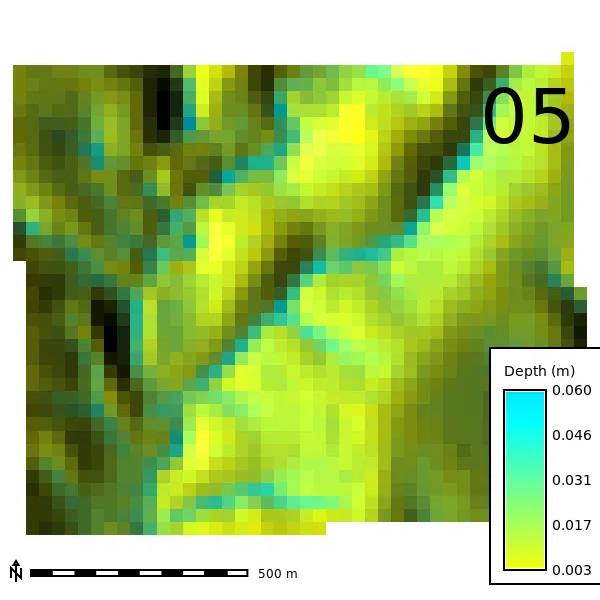
1x
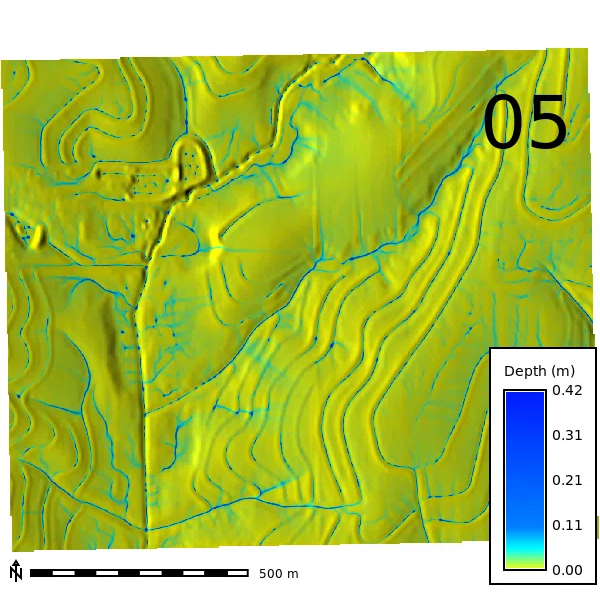
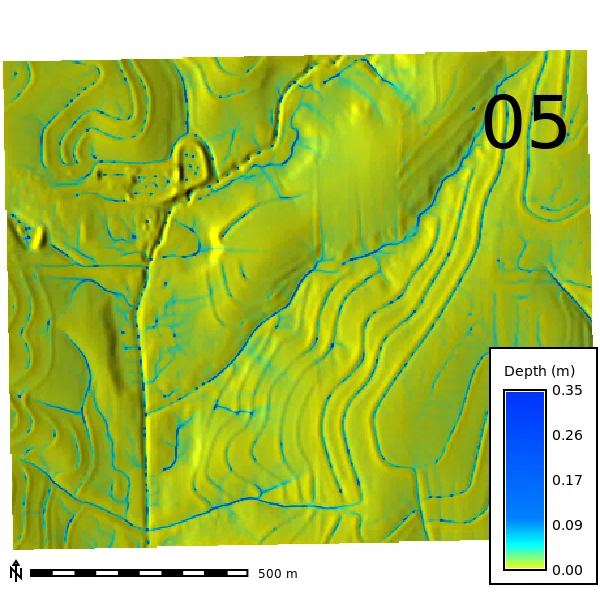
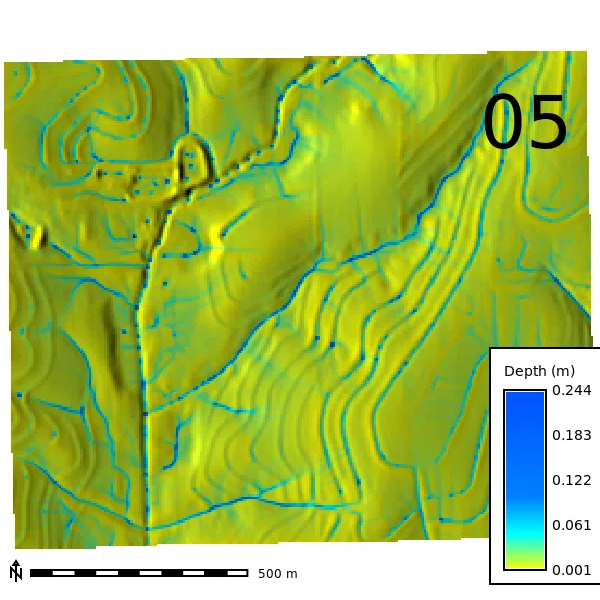
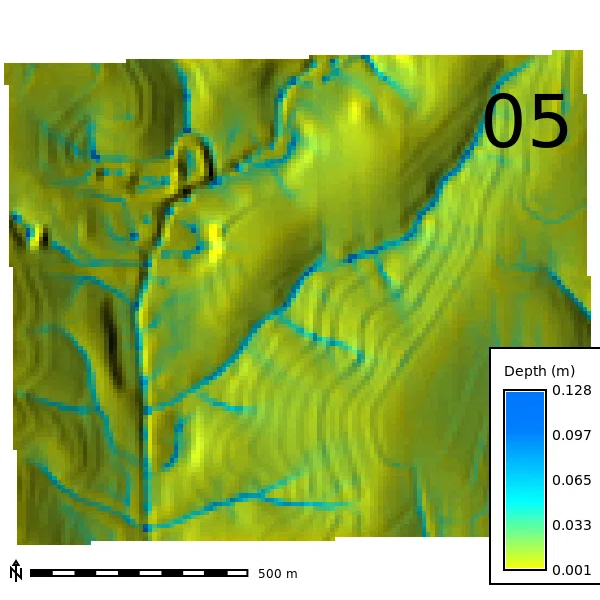
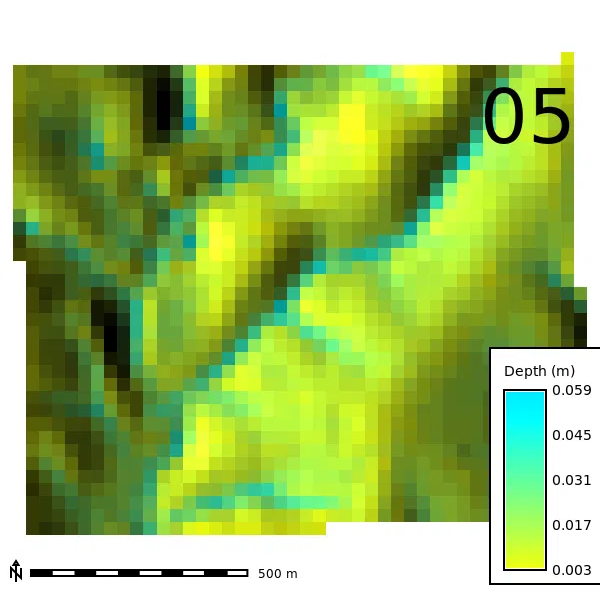
4.0x

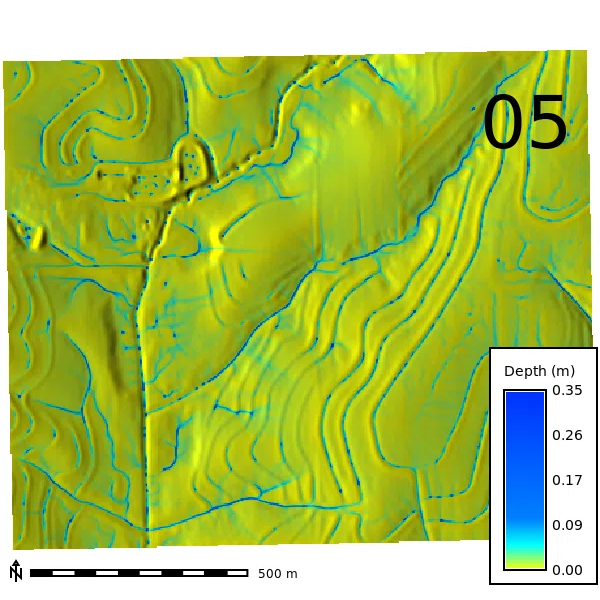
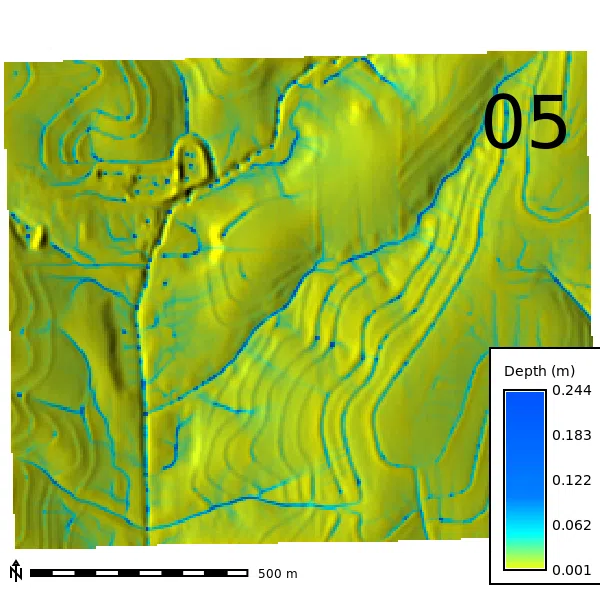
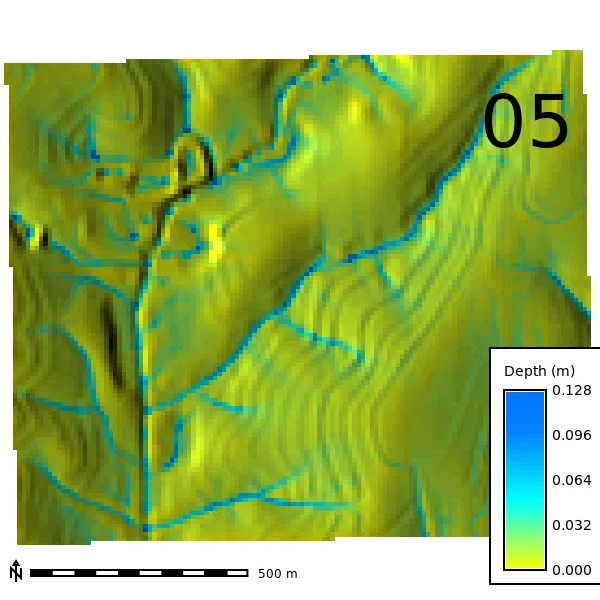
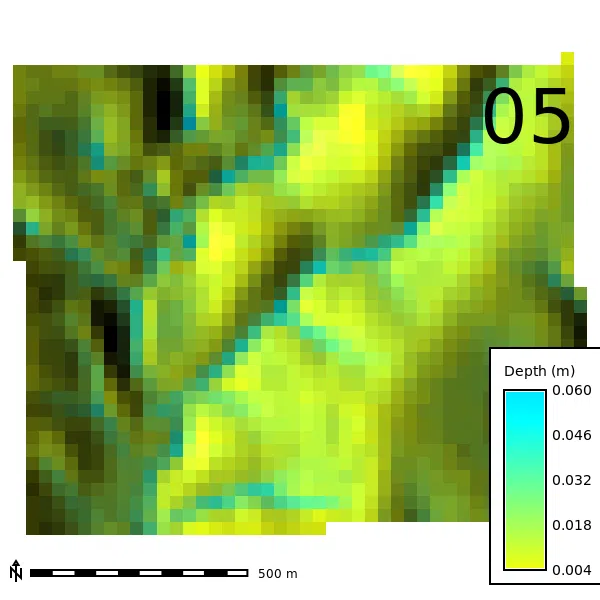
Clay Center - \(3m\) 2x

Clay Center - \(10m\) 2x

Site Depth Comparison

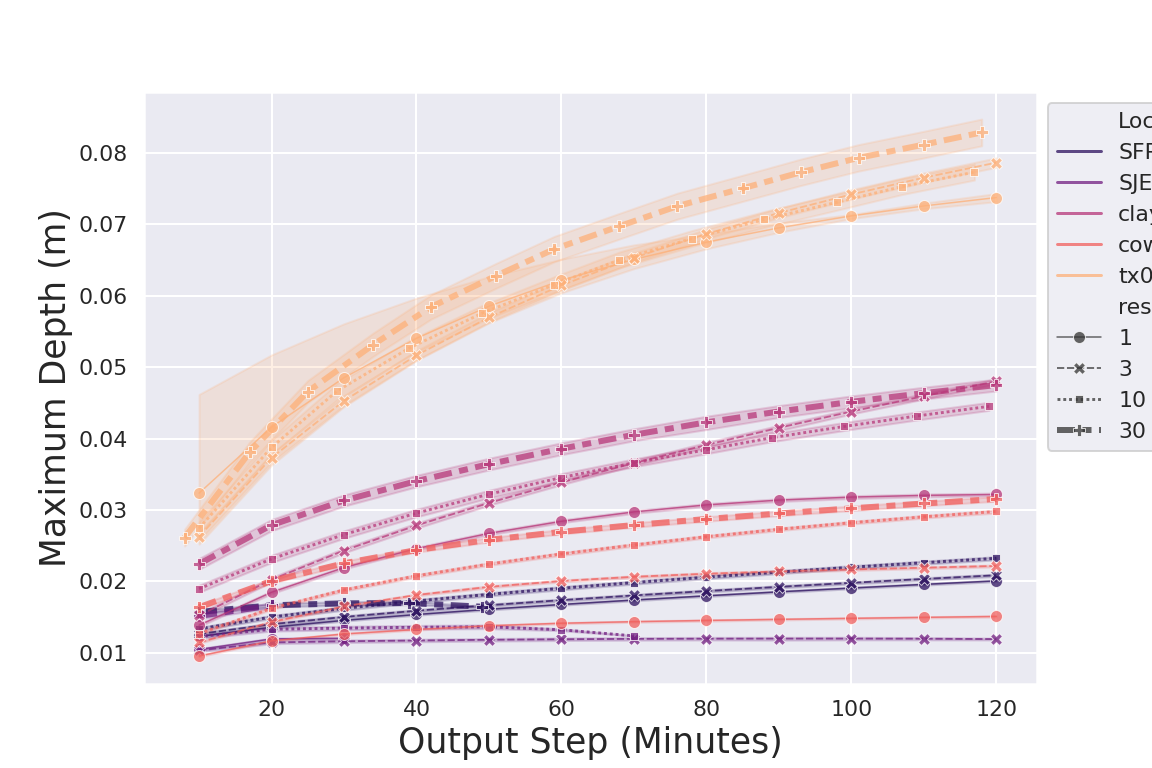
What’s next?
- Add additional sites
- Perform statistical analysis
- Include avaliable depth/flow gauge data